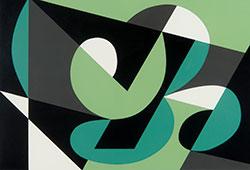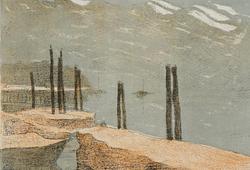Carl Milles
"Psyke"
Signed Millés. The motif conceived 1899-1900. Foundry mark Colin. Bronze, gold patina. Height 29 cm (including stone base 31.5 cm).
Literature
Conrad Köper, "Carl Milles", 1913, the same motif (in plaster) ill. at p. 5.
Henrik Cornell, "Carl Milles", SAK, 1957, the motif listed in the artist list of works at p. 247 (1899-1900).
Erik Näslund, "Carl Milles - en biografi", 1991, the motif listed in the artist list of works at p. 332 (1899-1900).
More information
Psyche by Carl Milles
The slender sculpture Psyche belongs to one of Carl Milles very rare early works from the turn of the century 1899-1900. In Paris, at the beginning of his career, he created several small sculptures/studies, some in bronze, some in other metal and some in plaster. At the time, he was influenced by the French sculptor and friend Auguste Rodin and in the current catalogue number you can see a connection to the French style Art Noveau.
The figure Psyche was according to the Antique mythology a personification of the human soul. Throughout art history, the love story of Cupid and Psyche's is a very popular motif. It was originally a folktale written down by the Roman writer Lucius Apuleius in his book "The Golden Donkey". The myth of Cupid and the Psyche is a story of impossible love, a struggle for love and finally the victory of love over the weaknesses of both humans and Gods.
Artist
Carl Milles was a Swedish sculptor born in Lägga. He studied at the Technical School in Stockholm, at the Ecole des Beaux-Arts in Paris under Auguste Rodin and on study trips to Germany, the Netherlands and Belgium. In Paris he came to stay for many years and made a living as an ornament carver. He studied the animals in the Jardin des Plantes (the Zoological Garden) and was strongly influenced by Auguste Rodin. Milles made a breakthrough with a monument to Sten Sture in Uppsala. He exhibited at the World's Fair in 1900 and was later given a solo exhibition at the Tate Gallery in London. Milles was professor of modeling at the Royal Academy of Arts in Stockholm. Well-known sculptures in public places signed by Carl Milles are the "Gustav Vasa" statue at the Nordic Museum, "Orfeusgruppen" outside the concert hall in Stockholm and the "Poseidonfontänen" in Gothenburg.
Read more



























